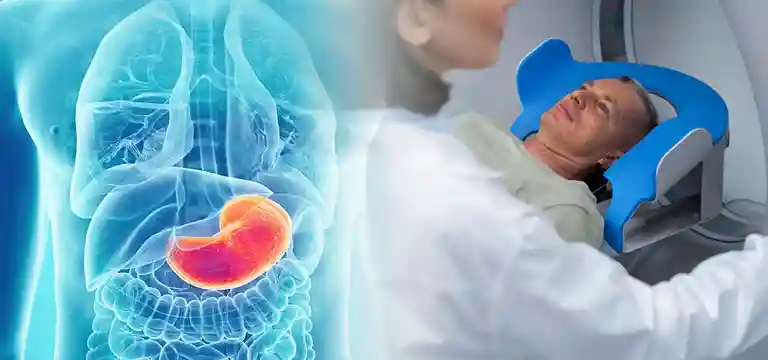
Gastrointestinal health plays a vital role in our overall well-being. The digestive system is responsible for the absorption of nutrients, elimination of waste, and maintaining the delicate balance of our body. When...
Gastrointestinal health plays a vital role in our overall well-being. The digestive system is responsible for the absorption of nutrients, elimination of waste, and maintaining the delicate balance of our body. When gastrointestinal disorders arise, they can significantly impact our health and quality of life. To accurately diagnose and effectively treat these disorders, medical professionals rely on various diagnostic techniques, one of which is PET scans.
In this article, we will explore the significance of PET scans in gastrointestinal disorders, how they work, their advantages over traditional imaging methods, and their applications in specific conditions. We will also delve into the advancements in PET imaging, Ganesh Diagnostics' expertise in this field, and why it is considered the best diagnostic center for PET scans.
Understanding PET Scans
PET scans, short for Positron Emission Tomography, are a cutting-edge diagnostic imaging technique that provides valuable insights into the metabolic processes occurring in the body. Unlike other imaging methods, PET scans evaluate the cellular activity within organs and tissues, allowing for the early detection, accurate staging, and effective monitoring of gastrointestinal disorders.
PET scans involve the use of a radiotracer, a radioactive compound that emits positrons (positively charged particles). These positrons interact with the surrounding electrons in the body, resulting in the release of gamma rays. The PET scanner detects these gamma rays, and a computer generates detailed images that highlight areas of abnormal metabolic activity.
Advantages of PET Scans in Gastrointestinal Disorders
PET scans offer several advantages in the diagnosis and management of gastrointestinal disorders:
Early detection
PET scans can identify metabolic changes even before structural abnormalities become apparent, enabling early detection and intervention.
Accurate staging
PET scans provide precise information about the extent and spread of gastrointestinal cancers, aiding in accurate staging and treatment planning.
Treatment response monitoring
PET scans can assess the response to therapy, allowing healthcare providers to modify treatment strategies if necessary.
Recurrence detection
PET scans are effective in detecting recurrent tumors or metastases, facilitating prompt intervention and improved outcomes.
Comprehensive evaluation
PET scans can evaluate multiple aspects of gastrointestinal health, including blood flow, oxygen utilization, and cellular metabolism.
Applications of PET Scans in Gastrointestinal Disorders
PET scans have widespread applications in various gastrointestinal conditions. Here are some examples:
Diagnosis of colorectal cancer
PET scans can accurately identify primary tumors, detect regional lymph node involvement, and identify distant metastases in colorectal cancer patients.
Evaluation of pancreatic diseases
PET scans play a crucial role in distinguishing benign from malignant pancreatic tumors, evaluating disease extent, and determining resectability.
Detection of liver tumors and metastases
PET scans help detect primary liver tumors, such as hepatocellular carcinoma, and assess the presence of metastases in the liver from other primary sites.
Assessment of esophageal and gastric cancers
PET scans assist in staging esophageal and gastric cancers, enabling optimal treatment planning and predicting patient prognosis.
Monitoring treatment response and recurrence
PET scans are valuable in monitoring the effectiveness of therapy and detecting disease recurrence in patients undergoing treatment for gastrointestinal disorders.
Preparation for a PET Scan
To ensure the accuracy and effectiveness of the PET scan, certain preparations are necessary.
Here are some key points to keep in mind:
Dietary restrictions and fasting requirements
It is essential to follow specific dietary guidelines, which may include fasting for several hours before the scan, especially if the radiotracer requires it.
Medication guidelines
Inform the healthcare provider about any medications you are taking, as some medications may interfere with the scan results. Follow their instructions regarding medication adjustments or restrictions.
Safety precautions and contraindications
PET scans involve a small amount of radiation exposure. If you are pregnant or breastfeeding, it is crucial to inform your healthcare provider beforehand, as well as any other underlying conditions you may have.
What to expect during the procedure
During the PET scan, you will be comfortably positioned on a scanning table, and the radiotracer will be administered intravenously. You will need to lie still for the duration of the scan, which typically lasts between 30 to 90 minutes.
Interpreting PET Scan Results
Interpreting PET scan results requires expertise and collaboration with a multidisciplinary team.
Here are some key aspects to understand:
Explanation of PET scan images
PET scan images show areas of abnormal metabolic activity, which are typically represented by brighter colors. These images provide valuable information about the location, extent, and intensity of the metabolic changes.
Importance of standardized uptake value (SUV)
The SUV is a quantitative measurement used to assess the level of radiotracer uptake in tissues. It helps determine the intensity of metabolic activity and aids in comparing different areas within the body.
Common findings and abnormalities
PET scans can reveal various abnormalities, such as the presence of tumors, metastases, or areas of inflammation. These findings guide healthcare providers in making accurate diagnoses and treatment plans.
Collaborating with a multidisciplinary team
Accurate interpretation of PET scan results requires collaboration among radiologists, nuclear medicine physicians, oncologists, and other specialists to ensure comprehensive patient care.
Ganesh Diagnostics: The Best Diagnostic Center for PET Scans in Gastrointestinal Disorders
When it comes to PET scans for gastrointestinal disorders, Ganesh Diagnostics stands out as a leading diagnostic center.
Here's why:
Expertise and experience in PET scans for GI disorders
Ganesh Diagnostics boasts a team of highly skilled and experienced medical professionals specializing in PET imaging for gastrointestinal disorders. They stay updated with the latest advancements in the field to provide the best possible care.
State-of-the-art facilities and advanced technology
Ganesh Diagnostics is equipped with state-of-the-art PET scanners and imaging technology, ensuring high-quality images and accurate diagnoses.
Accreditation and quality assurance
Ganesh Diagnostics maintains strict quality control measures and holds relevant accreditations, ensuring that patients receive reliable and trustworthy results.
Multiple branches across Delhi
Ganesh Diagnostics has multiple branches conveniently located across Delhi, including Hari Nagar, Budh Vihar, Firozabad, Mangolpuri, Model Town, Nangloi, and Yamuna Vihar, making it easily accessible to patients seeking PET scans for gastrointestinal disorders.
Availability of multiple panels for comprehensive diagnostics
Ganesh Diagnostics offers comprehensive diagnostic panels that include PET scans along with other imaging tests, ensuring a holistic evaluation of gastrointestinal health.
Highly skilled and experienced medical professionals
Ganesh Diagnostics prides itself on having a team of renowned medical professionals with extensive experience in the field of diagnostic imaging, ensuring accurate interpretations and timely reporting of results.
Timely and accurate reporting of results
Ganesh Diagnostics understands the importance of timely reporting, providing patients and referring physicians with prompt access to PET scan results.
Patient-centric approach and personalized care
Ganesh Diagnostics prioritizes patient comfort, safety, and satisfaction. The compassionate staff members ensure a seamless experience throughout the PET scan procedure.
Conclusion
PET scans have revolutionized the diagnosis and management of gastrointestinal disorders by providing valuable insights into metabolic activity. They offer advantages such as early detection, accurate staging, treatment response monitoring, and recurrence detection. When it comes to PET scans for gastrointestinal disorders, Ganesh Diagnostics emerges as the best diagnostic center due to its expertise, state-of-the-art facilities, multiple branches, and patient-centric approach. By prioritizing your digestive health and choosing a reliable diagnostic center like Ganesh Diagnostics, you take an important step towards maintaining overall well-being.
FAQs
What is the role of PET scans in diagnosing gastrointestinal disorders?
PET scans play a crucial role in diagnosing gastrointestinal disorders by providing valuable information about metabolic activity and identifying abnormalities that may not be visible on other imaging tests. They enable early detection, accurate staging, and effective monitoring of treatment response.
Are there any preparations required before a PET scan for gastrointestinal disorders?
Yes, there are specific preparations to ensure the accuracy of the PET scan. These may include fasting for a few hours before the scan, following dietary restrictions, and informing your healthcare provider about any medications you are taking.
How are PET scan results interpreted, and what do they reveal about gastrointestinal disorders?
PET scan results are interpreted by analyzing the metabolic activity in the body, which is represented by brighter colors in the images. They provide information about the location, extent, and intensity of metabolic changes, helping healthcare professionals make accurate diagnoses and treatment plans.
Why should I choose Ganesh Diagnostics for PET scans in gastrointestinal disorders?
Ganesh Diagnostics is the best diagnostic center for PET scans in gastrointestinal disorders due to its expertise, state-of-the-art facilities, multiple branches across Delhi, and availability of multiple panels.













